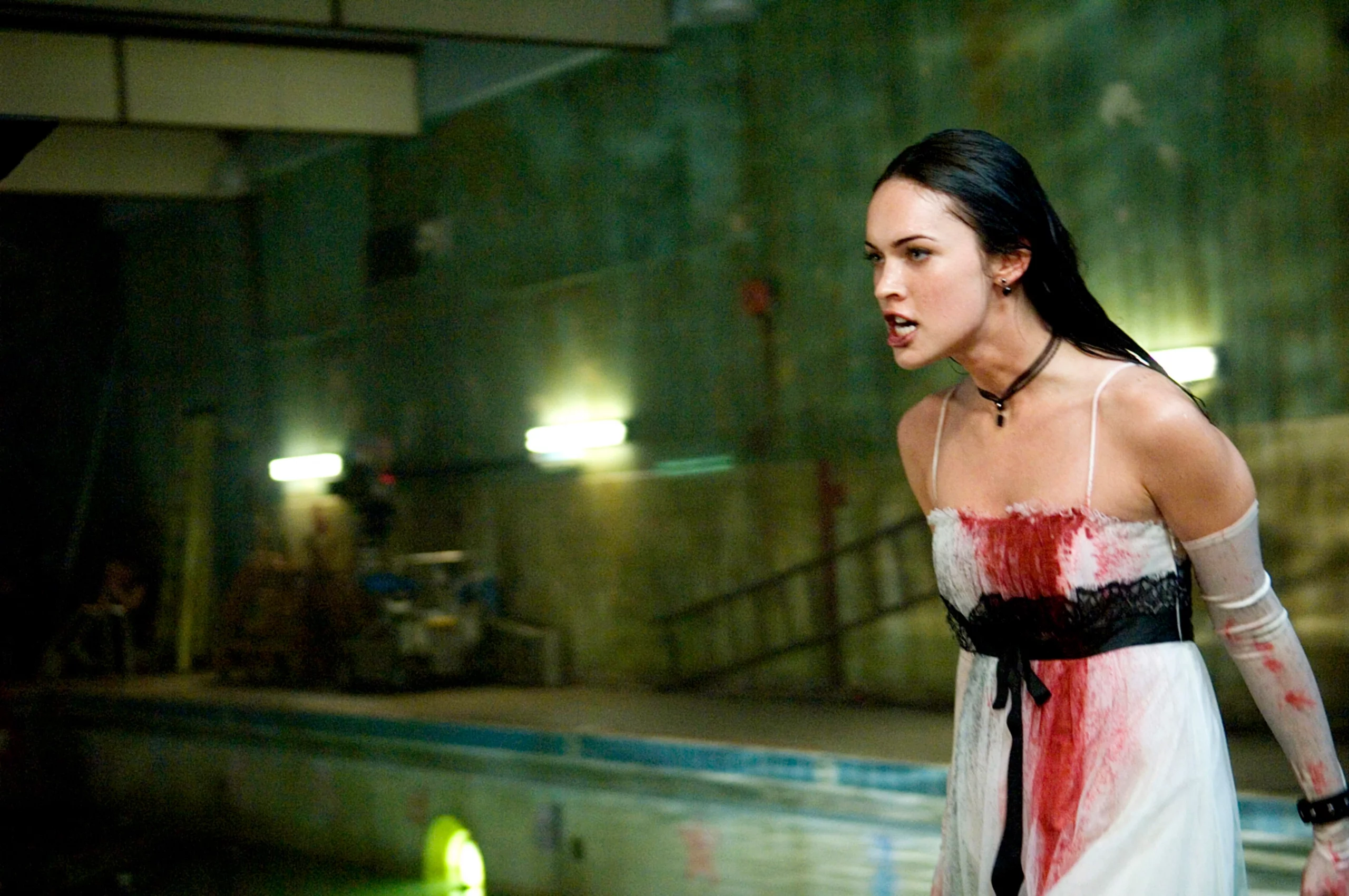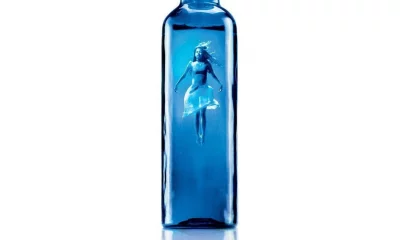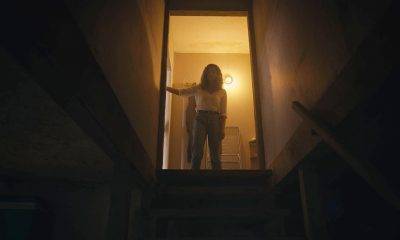Editorials
Of Weight & Monstrosity: The Canonical Graveyard of Women in Horror

HORROR’S LOYALTY TO WOMEN is a threat, held together by a thread. Our bodies become warnings, a neglected resource for improving human conditions. Horror films always take the lead; they’re afraid of nothing. They spring eternal, like a death march–the shepherds of our humanity. Horror is immersion therapy, a shift in respect and admiration. Horror depicts our existence as it is, not as we wish it were. Contrary to popular belief and for the greater good, a woman’s place is in Horror.
THE HORROR OF AUTEURS AT THE ALTAR
Italian Horror provides a roadmap to women’s bodies. These films nurture a profound sense of loss, stagnation, and apathetic delusion. Italian Horror is exemplified by predatory camerawork—using perverse images as a backdrop, as a standard, and capturing an authentic existence whether we like it or not.
Italian Horror respects the reality of death and refuses to shelter American viewers. It ushered in a new wave of cinematic violence that endured social accountability. The camera becomes a weapon, the killer becomes a cipher, and the audience confronts their darkest animosities.
PREGNANCY AS THE HORROR PRODUCT
ROSEMARY’S BABY (1968)
-
- This film remains the single most in-depth interrogation of motherhood and reproductive rights committed by celluloid. Guy Woodhouse, a struggling actor, spends most of the film concerned about his career and the impending birth of his first child. He has no concern for her, using her womb as a bargaining chip in pursuing power; it’s the battleground we wage war on before leaving them to clean up the mess you made.
IT’S ALIVE (1973)
-
- At the time of the film’s release, our cultural consciousness around women’s reproductive rights was evolving rapidly. It juxtaposed a barbaric code of conduct standard in the American healthcare system. This moral-bending storyline explores anxieties about childbirth, western medicine, and how religious ideation is an escape plan, a survival tactic. The film incubates the void between willful obedience and retaining autonomy- tricked into being unburdened by the right to govern our bodies. It makes a case for empathy under the most dismal conditions. It arrests our addiction to the exception rather than the rule.
BLACK CHRISTMAS (1974)
-
- This film perfectly balances brevity and wild indignation. It’s a response to radical cultural shifts about women’s bodies, the pregnancy pause that made Horror what it is today. Viewers become the killer, a defining example of how to evoke audience culpability. While we never gain perspective on the victim’s experience, we fixate on what it feels like to be in control. It calls us to search ourselves for where and how we willingly feed harm in a world we dispatch like agony. The killer is the camera, the Christmas lights are the noose, and the icicles are knives; the cure is taking your shame home and feeding it to others.
INSIDE (2007)
-
- French Horror dismantles our basic desires and immutable conditions. The film is a notorious love letter, worshiping the violence of pregnancy as an agent for social change. It suggests women’s bodies are a means to an end, a product to be updated, and the destiny not to be stopped. Pregnancy is glorious, but sometimes it’s the villain in our lives and leaves us slaughtered but martyred in suffering.
GRACE (2009)
-
- Grace begins as a benign portrait of the American family–and spirals into a catacomb of motherhood, the fear of dispassion, the loss of self, and unavoidable adaptation—pregnancy functions as a control tactic, like a confession, with the community as a formidable mistress. In our society, mothers wear cloaks of invisibility and invincibility. They are always culpable and painfully underserved. Grace mirrors the audience back to itself and answers the cultural query, how far would a mother go to protect the ones they love?
MOTHERHOOD AS THE HORROR HOUSE
THE DESCENT (2005)
-
- The pursuit of peace and light drives this work. It is definitive emotional plunder, trauma, and a loss that echoes like a hollowed womb. The film manifests apprehension, allowing the audience a euphoric outlet while characters develop from meek, protected victims to bloodthirsty hunters. The descent is a catacomb of bastardized choices- you can go forward, but you can’t go back.
THE BROOD (1979)
-
- David Cronenberg’s ‘The Brood’ (1979) interrogates motherhood with a fine-tooth comb. Locked up at an experimental psychiatric facility with the radical Dr. Hal Raglan, Nola is his star patient. A kind of Frankenstein monster, Nola acts as an expression of his practice, his theories, his results, and his narcissism. He encourages Nola to turn her thoughts to flesh and release them. All her anger and frustration manifest into the one thing her life revolves around — birth. Nola births her rage into an army of creatures hell-bent on avenging all the wrongs against mom. [read the full article]
THE HORROR OF BODIES AS PROPERTY
STARRY EYES (2014)
-
- Here, we watch how the female body internalizes rage, set to perform at a flash of light, at the command of those who wield power, and at the thought of finding salvation in exploitation. The film is a perfect execution of emotional horticulture, how vulnerability and susceptibility can repurpose our biology- a body horror taken to new heights, a recipe for coming undone. Attacking oneself proves ineffective in the long run but serves immediate resolve, an inverted climax for emotional foreplay. As the audience bares witness, a bond grows; her stolen moments of self-destruction become a circus act when she’s asked to commit it to the camera.
JENNIFERS BODY (2009)
-
- Society’s response to the film proves that a woman’s body is a commodity we’re entitled to abuse, discourage, dismiss, debase, and destroy. A body manufactured with chaos in mind. We think we know Jennifer on the inside because the outside is a comedy of intentions. The viewer is a harsh judge until and past the moment of sacrifice in pursuing power, money, and fame. The film disguises the assault as a human sacrifice that can only be effective if the victim is sexually promiscuous, shallow, and a monster of our own making. When the ritual fails, the audience faces themselves- and our biases to guide our vision. We continue to wallow in the blame as she seeks retribution, a women’s sexual desire as a form of therapeutic violence. Jennifer exacts her vengeance by playing the same role she was accused of all along, but the film doesn’t stop there. We dissect her choices and quickly forget that you can never sanction pain. Our allegiance becomes corrupted, and as a result, we aid in human suffering. We legitimize victimization- and participate in elevating its power. Sexual activity is not an inevitable gateway to trauma. In those final moments, past the credits, we’re challenged to accept that sisterhood and accountability can strike the same chord. It’s a reminder that they will take your dead body and make you a star.
















